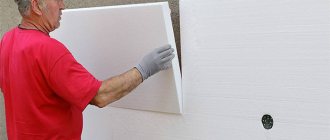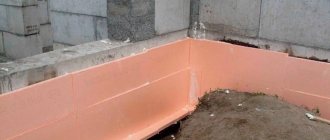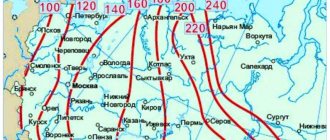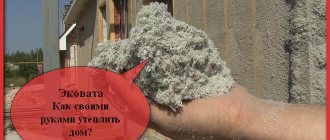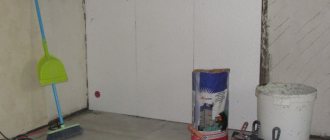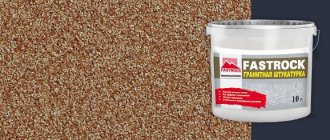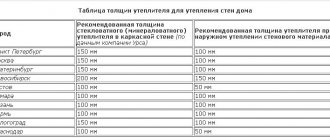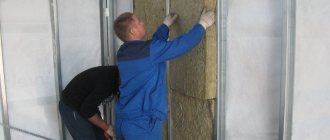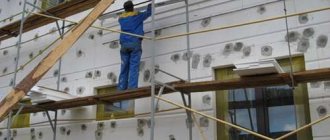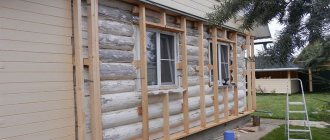Polystyrene foam (expanded polystyrene) is the most common insulation material, which is widely used both for insulating walls and for insulating pipelines. Most often, polystyrene foam is used to insulate the facade of a house. There are several reasons for this: low cost, excellent thermal insulation characteristics and simple installation.
Technology of facade insulation with foam plastic (expanded polystyrene)
Advantages of polystyrene foam for insulation:
- zero hygroscopicity (no need to use vapor barrier films);
- durability (if there is a good finish);
- resistance to biological activity;
- stability of geometry under the influence of external conditions.
Disadvantages include: flammability, toxicity when burning.
In general terms, many have an idea of how a wall is insulated from the outside with rigid insulation, but we need to dwell in more detail on how to insulate a facade with foam plastic correctly. Knowing the specifics of installing thermal insulation material will help you do the work yourself and supervise hired specialists.
Technology of facade insulation with foam plastic
Main stages:
- selection and calculation of materials;
- wall surface preparation;
- installation of a base profile;
- installation of foam plastic (slopes and walls);
- seam sealing;
- façade reinforcement and plastering;
- Finishing work.
The procedure (scheme) for insulating the facade is shown in the photo.
Scheme of facade insulation with foam plastic (expanded polystyrene)
The installation technology will be identical for polystyrene foam, polystyrene foam and penoplex.
How to calculate the thickness of insulation
Calculation of material thickness is carried out according to a two-step scheme:
- First, the thermal resistance of the wall is determined . This refers to the general value, together with the insulation. If there are many layers of the pie, all are taken into account. The value is standard, determined according to SNiP tables for a given climate zone.
- Then the thickness of the PPS is determined - the product of the thermal resistance of the wall and the thermal conductivity coefficient of the material.
It should be borne in mind that theory is largely corrected by practice, since it’s all about subtle effects, which are individual in each case and cannot be taken into account in calculations.
Therefore, during private construction, they do not go into complex theoretical research , being content with generally accepted standards for a given region.
If in doubt, you can always use an online calculator (preferably several) to find out the desired value. You just need to substitute your data into the required columns of the attached table and get the finished result.
Wall pie device
Cost of façade insulation with polystyrene foam (expanded polystyrene)
As an additional incentive to carry out facade insulation with foam plastic, we will provide prices for thermal insulation work per 1 m2.
| Type of work | Price for work, rub/sq.m. |
| Primer | 150 |
| Insulation of facade walls with foam plastic | 450 |
| Doweling | 300 |
| Foam reinforcement (including corners) | 375 |
| Finishing of foam plastic (plaster + painting) | 375 |
| Finishing (decorative tinted plaster) | 375 |
| Foam finishing (painting) | 200 |
| Finishing (brickwork technique) | 800 |
The estimated cost of work depends on the type of material, volume of work, surface quality and complexity of the wall configuration, speed of work, time of work (season of year).
It’s easier to calculate how much it costs to insulate a square meter. As users note, the price of materials is approximately equal to the cost of the work performed. This season (2016), turnkey foam insulation costs approximately 2000-2500 rubles. per sq.m.
Preparing walls for laying thermal insulation
Before installing insulation, the following steps are required:
- Sealing irregularities, gaps or cracks, depressions in the wall plane. Differences of more than 1 cm per 1 m of length must be leveled.
- The plane of the wall is covered with a contact primer (especially necessary for severe shedding).
- Installation of sheathing. This is done for subsequent installation of the casing (if planned).
The sheathing is made from wooden blocks or from drywall guides and forms a flat plane. The thickness of the planks corresponds to the thickness of the insulation (no less!) , the pitch of the planks is recommended to be about 40-50 cm from each other (in practice, a step is chosen that is a multiple of the width of the PPS sheet for greater efficiency).
Preparatory work
Before insulation of the external walls of the house begins, it is necessary to prepare the working surface.
Preparation of external walls
The surface to which the insulation will be attached must be smooth and clean. All differences when preparing the walls of the house must be removed, because this can cause fractures of the polystyrene foam during its installation. Fluctuations in uniformity should not exceed 1-2 cm, and large tubercles can be knocked down with a hammer, after which all peelings can be carefully removed. Also, if paint or whitewash was previously applied, it must be removed and dust and dirt removed.
Figure 2. Wall preparation process
To prime or not
After leveling, the surface of the wall should be treated with a soil mixture, because in this way small particles are removed and maximum adhesion and protection against the spread of microorganisms and fungi is ensured.
You can avoid priming the walls; running your palm over them does not leave any dirt behind. The choice is yours, but this inexpensive process improves the quality of facade insulation with polystyrene foam.
Any priming mixture can be used for exterior use according to the instructions on the package. Apply by brush, roller or spray.
Preparation of EPPS
In fact, foam boards are already ready to go, but if you have chosen extruded polystyrene foam, then you should pay special attention to it. A very smooth surface does not adhere well to glue, so it is necessary to make it looser before installing the slabs. This procedure is carried out with a needle roller for working with drywall; if such a tool is not in your arsenal, then it can be done using a mounting knife, which you need to make grooves. If you plan to apply the insulation in two layers, then treat both sides.
Finishing window sills and slopes
The structures of window sills, slopes and “drip” should be installed before the walls are insulated. Particular attention should be paid to the following points:
- The window sill should have a protrusion of 30-40 mm from the finish, so 10-11 cm must be added to the width, because the width of the polystyrene foam, as well as the finish, is taken into account.
- When finishing slopes, insulation with a smaller thickness is used - 2-3 cm is enough to prevent the wall from moving onto the glass. When performing installation, the foam board should protrude 10 mm beyond the facade wall for easy joining.
- Between the base and the insulation, it is necessary to install a so-called “drip line” made of galvanized steel, so that natural precipitation does not accumulate on the walls, but flows off.
Figure 3. Finishing near the windows
Thus, you see that the preparatory work stage requires special attention and a lot of time and effort, however, the service life and effectiveness of polystyrene insulation will depend on the quality of their implementation, so you should not neglect this.
Peculiarities
Expanded polystyrene is a universal heat insulator endowed with unique properties.
Advantages
The positive qualities of the material include the following:
- durability and strength (with high-quality installation it will last at least 50 years, does not crumble, does not rot, does not decompose);
- low thermal conductivity;
- high thermal insulation (a 10 cm thick slab has the same thermal insulation properties as one and a half meter brickwork);
- moisture resistance (the material absorbs no more than 6% of moisture and retains more than 90% of its properties);
- resistance to temperature changes, ultraviolet radiation, chemical and biological influences (mold and mildew do not form on it);
- frost resistance (withstands up to 50 freezing/thawing cycles and does not lose its physical and chemical characteristics);
- environmental friendliness (it is even used for food storage);
- fire safety (modern types of polystyrene do not support the combustion process, as they have been treated with fire retardants);
- simple installation technology (no need to purchase expensive tools, the material is lightweight and easy to cut);
- low cost.
Due to its high moisture resistance, expanded polystyrene does not require additional hydro- and vapor barrier. Unlike its main rival in the field of mineral wool insulation, polystyrene foam does not generate dust during installation, so no protective equipment (respirator, gloves, special clothing) is required to work with it.
Flaws
Expanded polystyrene is spoiled by rodents, they make moves in it. To protect the house from them, even at the cladding stage, poison in the form of grains or special capsules can be laid around the perimeter of the building, between the insulation layer and the cladding material.
This will be enough for a while. And, of course, you definitely need to install a base profile.
The material has low vapor permeability, so it is important to provide ventilation when insulating.
Useful advice from professionals
For high-quality insulation, it is recommended to listen to the advice of builders. The main ones:
- Insulation from the inside is carried out along the entire perimeter of the housing, and not just those walls that border the street.
- To prevent the formation of condensation and further problems with the insulation, care should be taken to ensure reliable ventilation. Air ducts are installed in the walls during the construction of a building or in the ceiling structure.
- To secure polystyrene foam boards, it is recommended to use mushroom dowels with plastic rods.
- According to reviews from builders, double-layer insulation with thin slabs of polyurethane foam on the outside is preferable to single thick insulation.
Simple tips will help you avoid making mistakes when insulating your home.
It is up to the owner to decide which polystyrene foam is best for insulating a house made of timber or brick. Each type has a number of advantages, for which professionals value it. The material is durable, lightweight, provides high-quality insulation and is affordable. With proper installation, the results will last for decades.
Common mistakes
When installing extruded polystyrene foam with your own hands, frequent mistakes are made. Knowing about them, you can avoid repetition of ridiculous situations. Below are the most common:
- The surface of the walls is not completely leveled. Therefore, the slab lies unevenly;
- The glue is applied to the center of the slab, the corners will bend outward over time;
- Plaster without a reinforcing mesh will lead to cracking of the surface;
- Poor insulation of the seams between the plates will lead to the formation of cold bridges;
- There is an opinion that the thermal insulation of a house made of aerated concrete will lead to the disruption of the vapor barrier of the premises and the possible formation of mold.
Only correct and competent installation of insulation in compliance with many conventions can benefit both the person and the entire building. This should be remembered!
PPS or EPPS
The starting raw material for the materials is polystyrene. The final product can vary greatly in density, hardness and structure. This is explained by the plate production technology:
- Foaming . Expanded polystyrene is characterized by lower weight due to the high air content in the pores and granules. The advantage is the low price, the disadvantage is that it retains heat worse with the same thickness of the slab.
- Extrusion . EPPS has less moisture-absorbing ability and higher density, strength and hardness. With identical sheet thickness, the thermal conductivity is lower. Against the background of the advantages, only one disadvantage stands out in the group of materials - high cost.
Craftsmen also note the low adhesion of extruded insulation due to the dense and smooth surface. To improve the situation, the boards are passed with a float or a needle roller (with metal spikes) to bend the drywall. Also, such products are characterized by a stepped shape of the mounting edges. This is a practical approach from manufacturers, thanks to which there are no cold bridges and the joints between individual sheets are strengthened.
Production line for extruded polystyrene foam Source ros-tenders.ru
Important nuances
Since creating high-quality and beautiful facades requires a flat surface, the walls must be leveled before attaching the insulation. Protruding parts are removed; in some cases, additional plastering of the building outside may be required in order to achieve the desired result. Differences of 1-2 cm are allowed. This difference can be compensated for by the adhesive composition.
In addition, the following points should be taken into account:
- Fixing with disc dowels can only be done after the glue has completely dried. If they are installed early, there is a possibility that the thermal insulation slab may move to the side or be pressed inward. This will lead to increased consumption of decorative plaster;
- Before attaching the reinforcing mesh, the plastic caps of fungi - umbrellas need to be puttied;
- If there is a need to insulate a house in two or three layers, the sheets are arranged strictly in a checkerboard pattern. Stitches stacked on top of each other are not allowed. Fixation is performed only to the main surface of the load-bearing walls;
- The panels are joined only with cut sides. So, the gap between them will be minimal. The resulting seam is sealed with liquid foam. The use of polyurethane foam is strictly prohibited; its use may lead to peeling of sheets from the surface of the walls and, accordingly, damage to the thermal insulation layer.
Installation of the reinforcing mesh and puttying is carried out only on the last layer, on the one located outside the structure. There is no need to process internal ones.
We insulate slopes
Windows and doorways are the main areas of the area where significant heat loss occurs. Therefore, it is necessary to organize thermal insulation of slopes. This process consists of several steps:
- cleaning the surface from contamination;
- primer of slopes in two layers to improve adhesion;
- leveling by grouting;
- cutting insulation;
- applying a layer of glue;
- installation of slabs;
- foaming the resulting cracks;
- plastering.
Finishing can be done later when finishing the walls.
Pasting the cornice
Before insulation, the cornice should be treated. It is important to follow several rules:
- choose a material of minimal thickness so that it can adhere to the adhesive layer;
- you need to start gluing the insulation strips from the wall;
- First, the vertical elements are fixed, and then the horizontal ones.
When the cornice is covered, they move on to organizing vapor and waterproofing.
Fastening methods
The most popular methods of attaching foam sheets are:
- on polyurethane foam;
- with special glue.
Polyurethane foam
This method ensures reliable fastening of the material to the base. The foam layer creates additional thermal insulation. The foam does not need to be diluted; it is easily and quickly applied. Exactly as much foam comes out of the gun as measured by pressing the trigger; there is no need to mix it and monitor the expiration date of the solution. The disadvantage of the method is the high cost of the material. If you need to insulate a small area of the facade, then polyurethane foam is the best solution.
Glue
Fastening with glue, when used correctly and following the technology, gives strength comparable to polyurethane foam. This method requires more thorough surface preparation and is more labor intensive per unit area. The glue will have to be mixed periodically, making sure that you have time to use it - the shelf life of the solution is limited to 2-4 hours, depending on the brand.
Installation of reinforcing mesh and finishing with plaster
- Reinforcing mesh is used to ensure greater rigidity of the plaster and prevent it from falling off the polystyrene foam. For this, a metal or plastic mesh with a small mesh size is used.
- First of all, you need to cover the window or door slopes and corners of the house . This is done with strips of mesh, cut about 30 cm wide and bent in half lengthwise to form a stable rib. All corner areas of the house are decorated with such “corners”.
- For plastering PPS, a special composition is used - a universal mass.
- The plaster is applied with a spatula to the corners and slopes formed with a mesh. In places where there will be joints with the main mesh, free areas are left for connecting the mesh panels.
- For laying on a plane, the mesh roll is cut into pieces of 1 m.
- A layer of plaster is applied, a piece of mesh is placed on it and pressed onto the plaster with a spatula. Using ironing movements, the mesh is pressed into the layer of universal mass, so that it is completely inside.
- The next piece is laid side by side with an overlap and the procedure is repeated.
- After the mesh is completely installed, the mixture is dried for several hours (up to a day), after which the composition must be grouted.
- Then a second leveling layer is laid, which is also rubbed down after drying . Grouting is done until the surface is completely smooth.
- After this, the surface is primed for greater reliability and durability of the coating.
- Finishing is carried out - painting, applying relief or decorative plaster, etc.
Installation sequence
Installation of reinforcing mesh
Insulating the facade with extruded polystyrene foam is a completely possible procedure, but it requires ensuring that steam is removed from the room using high-quality ventilation .
Failure to comply with this condition threatens the gradual accumulation of moisture inside the wall or in the gap between the wall and the PPS, which sooner or later will cause destruction or rotting of the walls. Otherwise, polystyrene is a completely reliable and inexpensive insulation material.
Kinds
Today, customers are offered several brands of expanded polystyrene. They differ in production method and technical characteristics.
Pressed polystyrene
Domestic material, produced under the brands PS-1 or PS-4.
It has a high density (60-600 kg/m3). Its area of application is radio engineering.
Pressless material
PSB, PSB-S – brands of expanded polystyrene from Russian manufacturers. The material has high physical and chemical properties. Its scope of application is facade insulation.
Pressed and non-pressed materials have one common drawback: at low temperatures, when moisture gets between the granules, they will begin to collapse.
Extrusion insulation
This type of expanded polystyrene is most often used for thermal insulation of facades. It is very durable and strong, its service life reaches 80 years.
But unlike pressless material, it has a significant drawback: it contains residual styrene, which is harmful to health.
Domestic brands of extrusion insulation are “Penoplex”, “TechnoNIKOL”.
2Solving the dew point problem
One of the key issues that can be solved by insulating a facade with facade plaster over foam is the location of the dew point and the problems associated with it. That is why all professionals, when choosing an insulation technology, recommend abandoning the internal thermal insulation of the house and insulating the facade surfaces of the building.
Incorrect location of the dew point occurs due to the fact that the boundary of contact between the frozen part of the wall and its section, heated by warm air from inside the house, is located nearby, or on the innermost side of the wall.
This problem is especially aggravated with internal insulation of a wooden or brick house, when the dew point is located between the wall and the insulation mounted on it. Condensation constantly forms between them, which, firstly, raises the dampness of the air, as a result of which mold quickly forms on the walls of the house, and secondly, it destroys the heat-insulating material itself.
It is very difficult to correctly calculate the dew point when insulating a house internally, since this is not a constant value that strongly depends on climatic conditions.
Do-it-yourself external insulation technology, as evidenced by reviews, can completely eliminate the dew point problem, since due to the minimal thermal conductivity of the insulation covering the facade, even in the coldest time of the year, the dew point will always be located on the outer surface of the facade, since the wall of the house will not freeze. Insulating facades with mineral wool has the same advantages.
In order for the thermal insulation of a house to move the dew point to where it is needed, that is, behind the facade of the building, it is necessary to correctly calculate the thickness that the extruded polystyrene foam used for insulation should have. This can be done using the table below.
Table for calculating the thickness of polystyrene foam
Manufacturers
It is better to buy cotton wool from trusted manufacturers. Among them are both well-known brands and mineral wool brands that are unfamiliar to the mass consumer.
Rockwool. (Denmark) produces insulation from basalt and gabbro fibers at production facilities located in several countries, including Russia. Features of insulating mats are:
- low thermal conductivity;
- good absorption of air noise;
- resistance to open flame (flammability class NG);
- long service life;
- environmental cleanliness.
Paroc. A manufacturer of basalt wool from Finland () offers consumers mats for residential construction and acoustic insulation of recording studios.
The insulation is characterized by a low thermal conductivity coefficient, fire resistance, and durability. It is almost impossible to find counterfeit products on sale - the company very carefully monitors the market for counterfeits. Unfortunately, for the average consumer the price of insulation is too high.
Isover. The leader in sales of mineral wool in Europe is a transnational company registered in France, which has its production facilities in Russia. The product has the best balance between price and quality.
TechnoNIKOL. The brand of thermal and waterproofing materials "TechnoNIKOL" belongs to Russian business, but is produced in many European countries (Lithuania, Belarus, Czech Republic, England). Among the huge product line, mineral wool insulation occupies a significant place. Modern equipment and careful quality control allowed the company to enter the TOP 5 largest suppliers of mineral wool to the construction market of Europe and the CIS countries.
IZOVOL. produces basalt insulation in Russia. The product has an affordable price and good quality. The line of insulation products includes mats produced separately for facades, roofs, floors, and foundations.
All quality characteristics meet the requirements of EU and Russian standards. A slight shedding of fibers during the installation process blurs the impression of quality. The manufacturer knows about the problem, but cannot fix it yet.
In addition to the listed brands, it is worth paying attention to the products of the brands “KNAUF” and “URSA”. It is very often bought for insulating timber houses.
From the middle price sector, experts note the insulation "Beltep" (Belarus). It has excellent rigidity, good vapor permeability, easy installation, and an affordable price.
